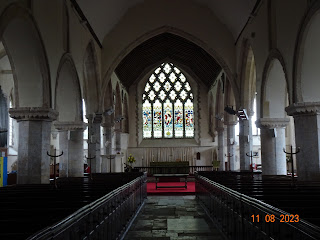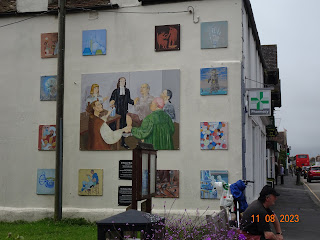New Romney is the largest town in Romney Marsh, with a population around 7,000. New Romney was one of the Cinque Ports, five ports in the south east of England that received tax relief and other benefits on the condition that they maintained a fleet of boats for the use of the monarch. These ports were strategically important – they were close to Normandy, where the Norman Kings of England and many of their barons had lands. Before the Norman Conquest, Edward the Confessor had recognised their importance and the Confederation of the Cinque Ports dated from his reign (1042-
1066).
The town began sometime before the 8th century as a fishing settlement on the bank of the River Rother. There is a written record from AD 914 describing a channel to the sea known as Rumensea. The name of the channel was later used to describe the settlement itself.
Although by the 13th Century the harbour was beginning to silt up, a canal called the Rhee Channel was constructed between the River Limen and New Romney to improve the flow of water and prevent further silting up from occuring. The fact that a canal was constructed to help keep New Romney’s harbour operating shows how valued it was by local people. A 1799 history of New Romney describes the town at its height: “a large and commodious harbour for shipping, and the town adjoining to it increasing to a considerable size, and being well filled with inhabitants.”
The proximity to the sea that brought New Romney great prosperity, but it almost destroyed the town in 1287, when a devastating flood left the harbour and town choked with silt and mud.
The storm was so severe that it changed the course of the River Rother itself. The river’s waters created a new channel that flowed out to sea at Rye, about fifteen miles away. The river still follows this altered course today. The Rhee Channel was also blocked by deposits of sand and shingle and eventually it dried up.
One long-lasting effect was that the accumulated sand, mud, and silt was never completely cleared from the town. As a result, many of the older buildings in town have steps leading down to their entrances.
The loss of New Romney's harbour meant that its importance as a Cinque Port town diminished in the 14th and 15th centuries.
Like many towns in the Romney Marsh area, New Romney is dominated by a large Norman-era church, which is dedicated to St Nicholas.







the tomb of Richard Stuppenye, a jurat of New Romney who died in 1526
The carved door surround of the Norman west door was restored in 2013 to reveal the beauty of the golden Caen stone.
In 1287 a catastrophic storm smashed its way across the Romney Marshes, causing incalculable damage and smothering New Romney in tons of sand, gravel and silt.
The little town never recovered, and the deluge of material explains why the west door of St Nicholas' church is far below present day ground level.
Directly opposite the church is the beautiful Burma Star Memorial Garden.



























No comments:
Post a Comment